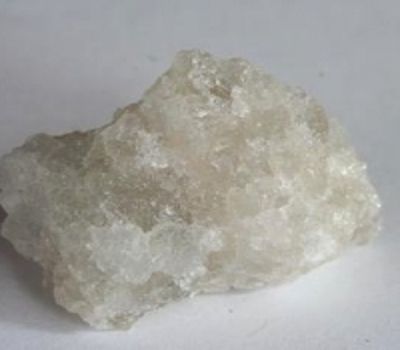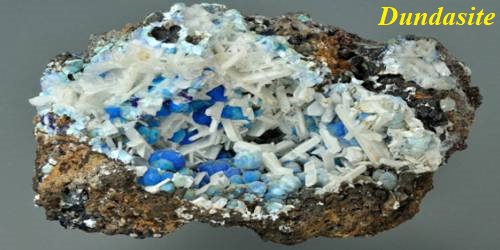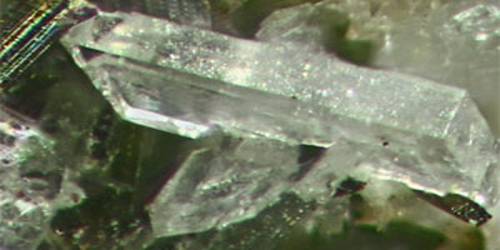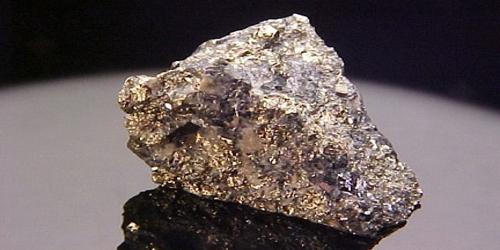Kieserite is the magnesium sulfate mineral (MgSO4·H2O) and is named after Dietrich Georg von Kieser (Jena, Germany 1862). It is a fine-grained white mineral consisting of hydrated magnesium sulfate, occurring often in salt mines. It is an effective source of both magnesium and sulfur.
General Information
- Category: Sulfate minerals
- Formula: MgSO4H2O
- Crystal system: Monoclinic
- Crystal class: Prismatic (2/m) (same H-M symbol)

Fig: Kieserite
Properties
It has a vitreous luster and it is colorless, grayish-white or yellowish. Its hardness is 3.5 and crystallizes in the monoclinic crystal system. Gunningite is the zinc member of the kieserite group of minerals.
- Color: Colorless, grayish-white or yellowish
- Crystal habit: Massive, granular; rarely as pyramidal crystals
- Cleavage: {110} and {111} perfect
- Fracture: Uneven
- Tenacity: Fragile
- Mohs scale hardness: 3.5
- Luster: Vitreous to dull
- Streak: White
- Diaphaneity: Transparent to translucent
- Specific gravity: 2.57
- Optical properties: Biaxial (+)
Occurrence – Typically in marine salt deposits; rarely as a volcanic sublimate or efflorescence
Kieserite commonly occurs in marine evaporites and rarely in volcanic environments as a sublimate. It often occurs as intergrowths with halite or associated with carnallite and other potassium salts. It occurs in association with halite, carnallite, polyhalite, anhydrite, boracite, sulfoborite, leonite, epsomite, and Celestine.
Uses
It is used in the production of Epsom salt and as a fertilizer; the overall global annual usage in agriculture in the mid-1970s was 2.3 million tons. Most commonly used in horticulture, one of its great benefits is that it is suitable for all types of crops and for use in any type of soil, regardless of pH level.
Kieserite is also used for cleaning hard water deposits from tiles, stones, and other pool and fountain lining materials. Due to its hardness, which is greater than hard water deposits but less than tiles and other water feature linings, it is blasted at the hard water deposits to remove them.
Information Source:
















